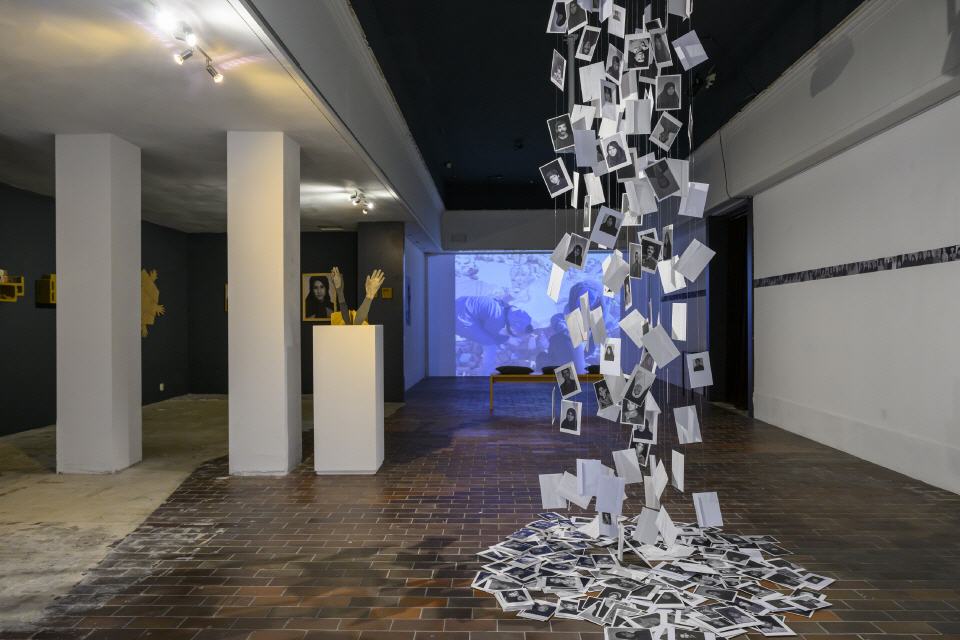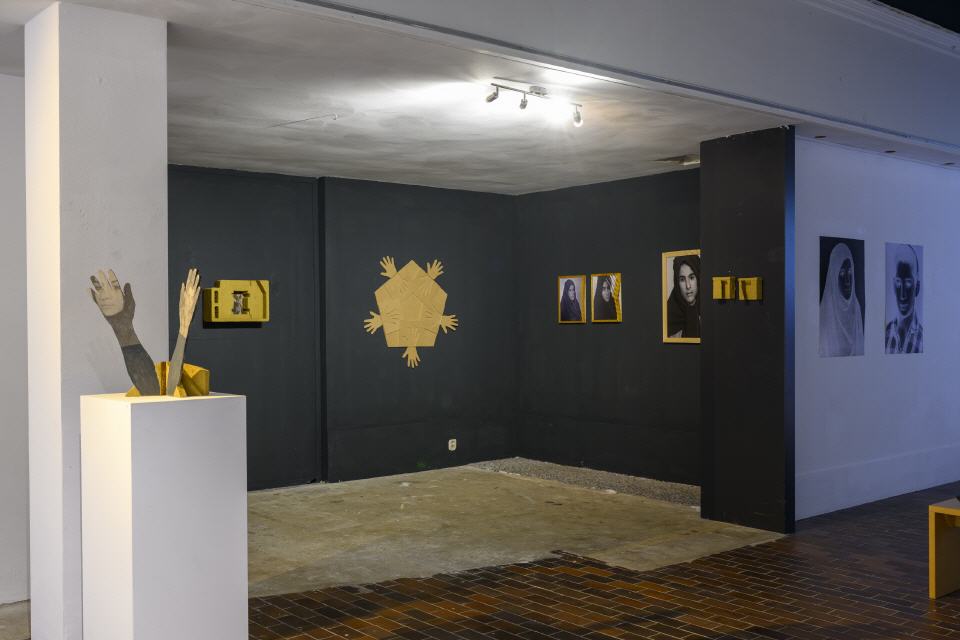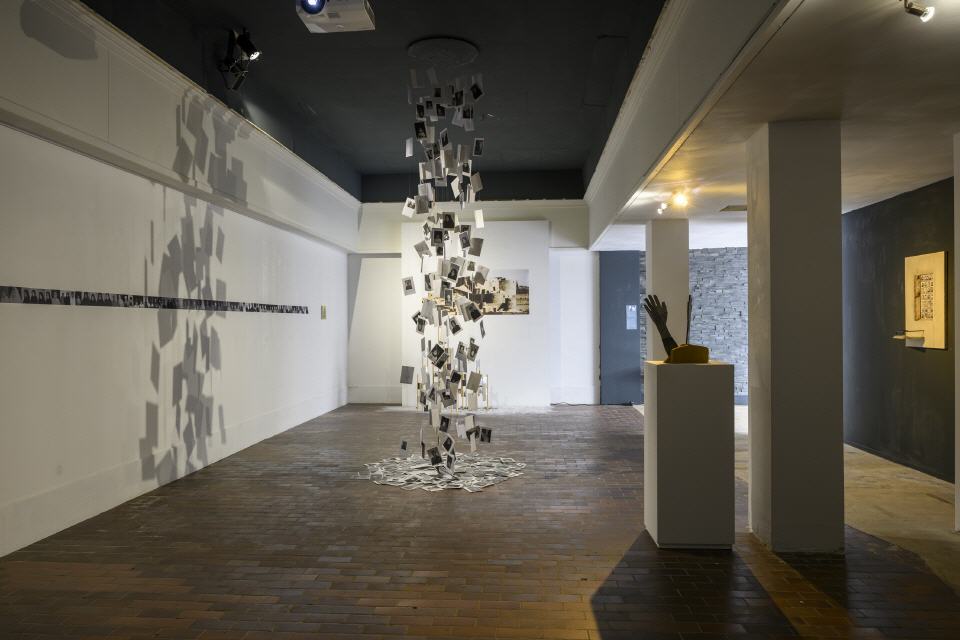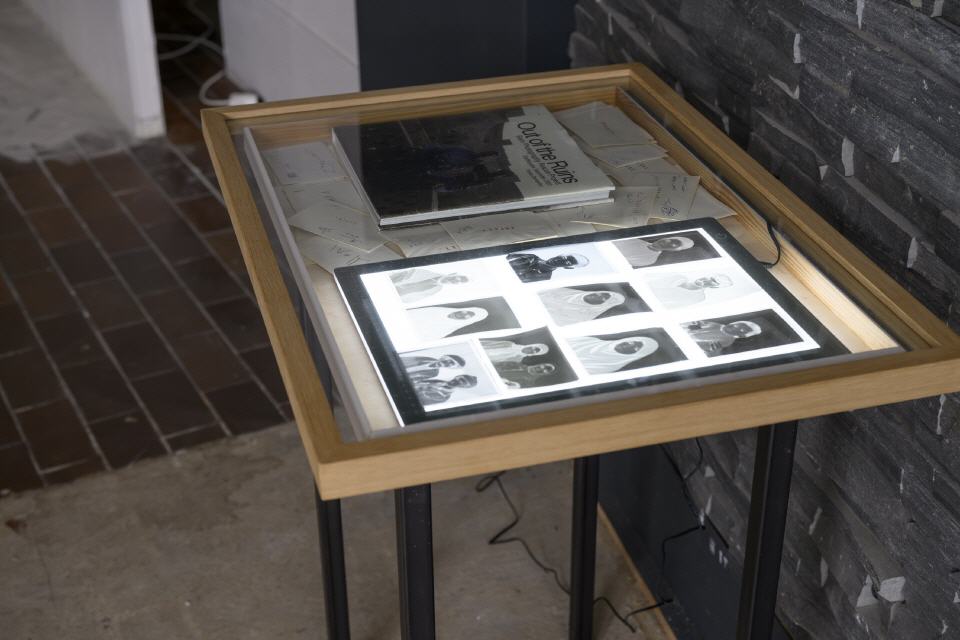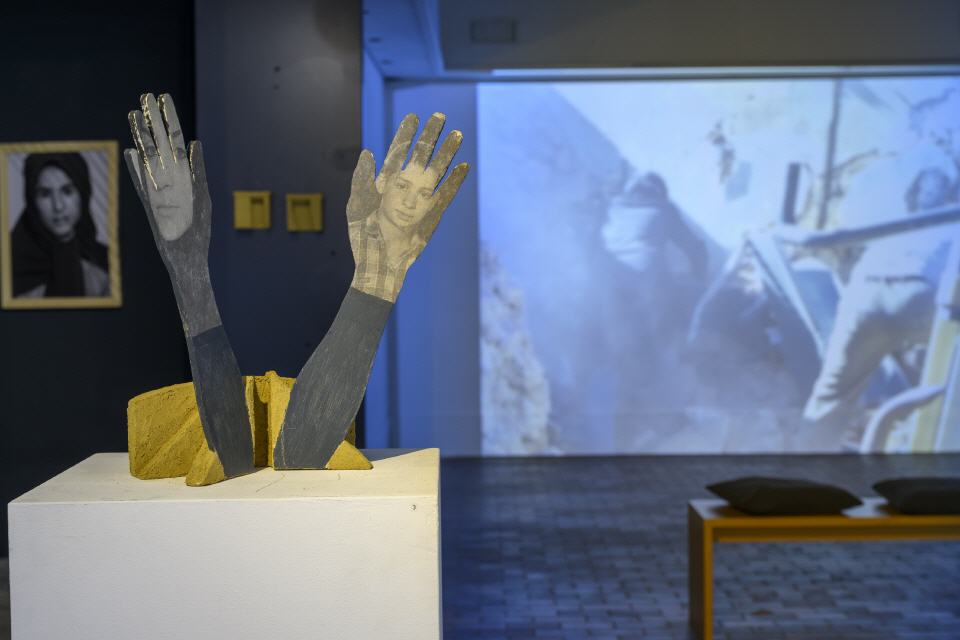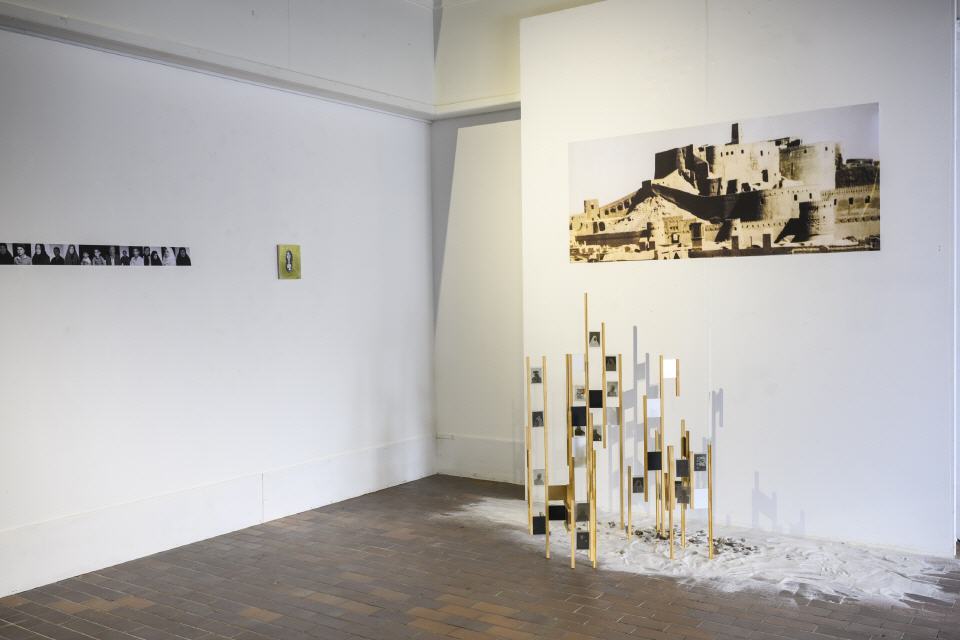RUDI STRUIK
Introduction Rudi Struik
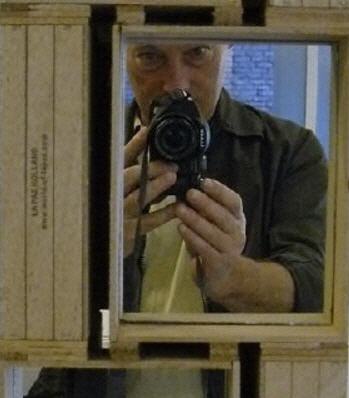
Rudi Struik’s work is characterized by a large diversity of materials and techniques. Especially his early work shows a great care for the materials – particularly wood - and their handling. Wood meant a warm, ‘living’ material for him in which he felt able to express himself freely. Without a preconceived concept he started to work with a piece of wood; while carving, an idea of a form developed, initially following the natural grain of the wood, later in combination with other materials, such as Perspex and metal.
More recently, the emphasis is on the production of ‘murals’ and assembled objects and installations. In the series of murals, randomness plays an important role. By making plaster casts of (rusted) metal sheets, the outcome of texture and color is unpredictable. The colors are formed by the oxidation of the metal. They are absorbed by the plaster, creating beautiful patterns and colors. The mural are further worked out by drawing, painting or small relief’s.
The assemblages and installations are multifaceted and often combined with light. Disregarded materials, such as old wooden cigar and wine boxes, and old bronze water tap, but also old glass slides from the Department of Art History of the University of Leiden
that in the golden days were used for art historical education but which are now redundant, receive a new identity and gain a new potential of meaning in the new context of an art work.
Recently, he started experimenting with digital camera images. Unusual viewpoints, camera angles and materials create new worlds of imagery. Enlarged, they built environments that generate a experience.
Recurrent themes in his work are: perception; memory; selective histories; de- and recontextualizing objects and images; stories of migration.
Fotografie Peter Cox
HET BEELD HERVONDEN, INTRODUCTIE
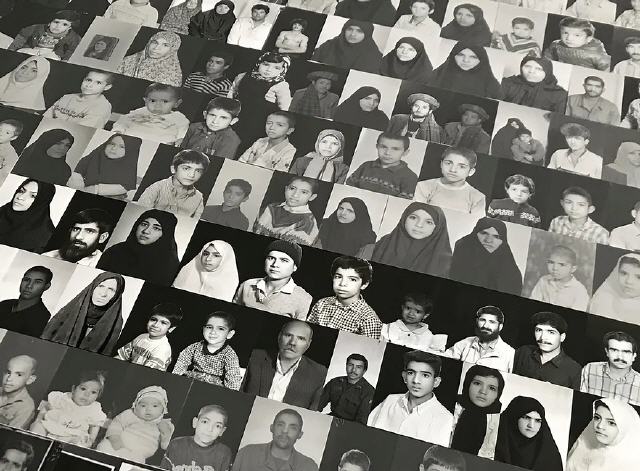
De recente aardbeving in het grensgebied van Turkije en Syrië heeft de wereld diep geschokt, het menselijk leed, de vernietiging, de onmacht. Meteen ook werden foto’s verspreid van mensen die vermist waren: heeft iemand ze gezien? Op 26 december 2003 werd de stad Bam in zuidelijk Iran door zo’n zelfde hevige aardbeving geheel verwoest, met tienduizenden doden tot gevolg. Hoe belangrijk foto’s voor Bam toen zijn geweest – en nog zijn – is het thema van deze tentoonstelling.
Beeldend kunstenaar Rudi Struik maakte mixed media installaties met door de Iraanse fotografe en fotohistorica Parisa Damandan gevonden foto’s als basis.
Op zoek naar het verloren beeld
“Meteen na de aardbeving in Bam vroeg de Iraanse fotografe en fotohistorica Parisa Damandan zich af wat zij kon doen en reisde af naar de verwoeste stad, niet als fotograaf maar als hulp. Meehelpend met puin ruimen kwam een oude vrouw naar haar toe met de vraag of ze haar zou kunnen helpen met zoeken naar rollen negatieven. Zij vertelde Damandan dat haar twee zoons onder het puin verongelukt waren, een ervan was de dag voor de aardbeving net getrouwd. Zij hoopte foto’s van de trouwreportage terug te vinden op de plek waar de fotozaak had gestaan, haar zoon had de rolletjes daar afgeleverd. Die foto’s waren het enige dat haar nog restte.
Damandan ging op zoek naar het verloren beeld om troost te brengen, het verdriet een plaatsje te helpen geven. De zoektocht naar de negatieven mondde uit in een immens archief. Bij een bezoek aan Nederland in 2007 ontmoette Damandan Rudi Struik en schonk hem een deel van haar archief.
Zij is verrukt dat in de tentoonstelling ‘Het beeld hervonden’ haar werk resoneert: de overtuiging dat foto’s je verbinden met familie en geliefden en je de mogelijkheid bieden het beeld bij je te kunnen dragen. Want, hoe verzoen je je met dergelijk verlies? Hoe belangrijk is dan de nabijheid van de foto’s, hun tastbaarheid, ze aan te raken, te kussen? Het is de kracht van het beeld om mensen die je ontvallen zijn weer naar de fysieke wereld te kunnen halen.” (Kitty Zijlmans)
Parisa Damandan bracht in 2013 een boek uit over dit project: Out of the Ruins. Bam Photography Rescue Project – Earthquake December 2003.
Films van Reza Torabi en Maryam Raz van het zoeken naar foto’s tussen de puinhopen en de emotionele reacties van mensen bij het zien van de foto’s, maken deel uit van de expositie.
Expositie mei/juni 2023. Pennings Foundation - Eindhoven
OPENINGSTOESPRAAK - OPENINGSSPEECH
HET BEELD HERVONDEN
Tentoonstelling Pennings Foundation Eindhoven, 13 mei – 25 juni 2023
Op zoek naar het verloren beeld
De recente aardbeving in het grensgebied van Turkije en Syrië heeft de wereld diep geschokt, het menselijk leed, de vernietiging, de onmacht. Meteen ook werden foto’s verspreid van mensen die vermist waren: heeft iemand ze gezien? Op 26 december 2003 werd de stad Bam in zuidelijk Iran door zo’n zelfde hevige aardbeving geheel verwoest, met tienduizenden doden tot gevolg. Hoe belangrijk foto’s voor Bam toen zijn geweest – en nog zijn – is het thema van deze tentoonstelling.
Meteen na de aardbeving in Bam vroeg de Iraanse fotografe en fotohistorica Parisa Damandan zich af wat zij kon doen en reisde af naar de verwoeste stad, niet als fotograaf maar als hulp. Meehelpend met puin ruimen kwam een oude vrouw naar haar toe met de vraag of ze haar zou kunnen helpen met zoeken naar rollen negatieven. Zij vertelde Parisa dat haar twee zoons onder het puin verongelukt waren, een ervan was de dag voor de aardbeving net getrouwd. Zij hoopte foto’s van de trouwreportage terug te vinden op de plek waar de fotozaak had gestaan, haar zoon had de rolletjes daar afgeleverd. Die foto’s waren het enige dat haar nog restte. De zoektocht naar de negatieven mondde uit in een immens archief. Uit het met zorg verzamelde en schoongemaakte materiaal heeft Parisa het boek Out of the Ruins. Bam Photography Rescue Project – Earthquake December 2003 (2013) samengesteld. Zij ging op zoek naar het verloren beeld om troost te brengen, het verdriet een plaatsje te helpen geven.
Het beeld hervonden
Wij ontmoetten Parisa in 2007 toen zij voor haar fotowerk in Nederland was. Zij zag in het werk van Rudi gebaseerd op oude glasdia’s een vergelijkbare aandacht voor en interesse in het (uit het oog geraakte) beeld en schonk hem een deel van haar archief: een grote hoeveelheid negatieven in envelopjes en pasfotootjes. Het materiaal heeft geleid tot nieuw werk waarin de foto’s figureren, waarin mensen ontrukt aan de vergetelheid hernieuwd aanwezig zijn. In 2021 kreeg het Bam-fotoproject een nieuwe impuls doordat weer een andere kunstenaar Sonja van Kerkhoff in haar bijdrage aan de bundel Mix & Stir* ernaar verwees. Zo kreeg het een derde laag. Ook gaf het Rudi Struik de impuls het materiaal opnieuw onder handen te nemen. Zo ontstonden de afgelopen twee jaar nieuwe werken en installaties en ontwikkelden zich ideeën voor een tentoonstelling, die de foto’s, de mensen, opnieuw present stelt. Parisa deed destijds wat zij kón doen, het terughalen van foto’s in de hoop bij te dragen aan het verwerken van trauma. Zij is verrukt dat in de tentoonstelling ‘Het beeld hervonden’ haar werk resoneert: de overtuiging dat foto’s je verbinden met familie en geliefden en je de mogelijkheid bieden het beeld bij je te kunnen dragen. Want, hoe verzoen je je met dergelijk verlies? Hoe belangrijk is dan de nabijheid van de foto’s, hun tastbaarheid, ze aan te raken, te kussen? Het is de kracht van het beeld om mensen die je ontvallen zijn weer naar de fysieke wereld te kunnen halen.
De tentoonstelling
De werken op de tentoonstelling vertrekken vanuit het fotomateriaal dat hier in Nederland is en spelen in op de videofilm die is gemaakt door Maryam Raz en Reza Torabi van het fotoreddingsproject van Parisa. Op de video, die in de tentoonstelling wordt getoond, zien we Parisa aan het werk, hoe steeds meer mensen komen helpen en hoe de foto’s en negatieven worden teruggevonden. Ook zien we de immense verwoesting. De film wordt geprojecteerd op de korte kant van de ruimte en is goed zichtbaar meteen bij het binnenlopen. Een aantal werken zijn een fysieke vertaling van fragmenten uit de video. Midden in de ruimte valt een regenval van enveloppen naar beneden met geprinte portretten van pasfoto’s van bewoners van Bam. De enveloppen hangen aan nylondraden vanaf het plafond naar beneden en eindigen in een poel van originele envelopjes uit Bam op de grond. Over de hele lengte van de muur tegenover de deuropening komt een fries van foto’s, meer dan negen meter lang en tien cm hoog, als één lange ketting van beelden, die uitnodigt dichterbij te komen. Een vijftal prints van de negatieven van portretten op A1 formaat benadrukken met hun indringende aanwezigheid des te meer de kracht van een beeld. De twee versneden beelden kunnen een subtiele verwijzing zijn naar de positie van de vrouw nu in Iran. Een aantal wat kleinere, driedimensionale werken zijn opgebouwd als bouwsels en staketsels met daarin foto’s. Er zijn werken met handen – helpende handen, groetende handen, handen die uitreiken. Twee- en driedimensionaal werk vormen tezamen met de video één totale installatie die de beschouwer betrekt bij een dergelijk gebeuren op basis van de kracht van het beeld.
Leiden, 14 febr. 2023
Rudi Struik
Kitty Zijlmans
THE IMAGE REGAINED
Pennings Foundation Eindhoven, Exhibition 13.05.2023 – 25.06.2023
In search of the lost image
The world has been deeply shocked by the recent earthquake in the border region of Turkey and Syria, the human suffering, the destruction, the powerlessness. Photographs of missing people immediately began to circulate: has anyone seen them? On 26 December 2003, the city of Bam in southern Iran was completely destroyed in a similar violent earthquake, which left tens of thousands of people dead. How important photographs have been – and still are – for Bam is the theme of this exhibition. Immediately after the earthquake in Bam, the Iranian photographer and photo historian Parisa Damandan wondered what she could do and travelled to the ruined city, not as a photographer but to offer assistance. While she was helping to clear debris, an old woman approached her to ask if she could help her search for rolls of negatives. She told Parisa that her two sons had perished under the rubble, one of whom had got married the day before the earthquake. She hoped to find photographs of the wedding shoot at the location where the photographic shop had stood; her son had delivered the rolls there. These photographs were the only thing she had left. The quest for the negatives culminated in a huge archive. Parisa created the book Out of the Ruins. Bam Photography Rescue Project – Earthquake December 2003 (2013) from the carefully collated and cleaned material. She went in search of the lost image to bring comfort, to help give grief a place. The image regained We met Parisa in 2007, when she was in the Netherlands for her photography work. Recognizing a similar attention for and interest in the (lost) image in Rudi’s work based on old glass slides, she gifted him a part of her archive: a large quantity of negatives in little envelopes and passport photos. The material has resulted in new work, featuring the photographs, in which people are plucked from oblivion are given a renewed presence. In 2021, the Bam photo project received new impetus when yet another artist, Sonja van Kerkhoff, referred to it in her contribution to the volume Mix & Stir*. This gave it a third layer. It also gave Rudi Struik the impulse to work on the material again. Thus, over the past two years, new works and installations emerged and ideas developed for an new exhibition that would re-present the photographs, the people. Parisa did what she could, retrieving photographs in the hope of contributing to the processing of trauma. She is delighted that her work resonates in the exhibition ‘The image rediscovered’: the belief that photographs connect you to family and loved ones, and offer the opportunity to carry the image with you. Because, how do you reconcile with such loss? How important, then, is the
closeness of the photographs, their tangibility, being able to touch them, kiss them? The power of the image is its ability to bring people you have lost back to the physical world.
The exhibition
The works in the exhibition start from the photographic material that is here in the Netherlands and respond to the video film about Parisa’s photo rescue project made by Maryam Raz and Reza Torabi. In the video, shown in the exhibition, we see Parisa at work, how more and more people come to help, and how the photographs and negatives are recovered. We also see the immense devastation. The film is projected on the short side of the space and is easily visible upon entering the room. A number of works are a physical translation of fragments from the video. In the middle of the space, a waterfall of envelopes rains down with printed portraits of passport photos of Bam’s residents. The envelopes hang from the ceiling on nylon threads and end in a pool of envelopes, originally from Bam, on the floor.
Across the entire length of the wall opposite the doorway is a frieze of photographs, more than nine metres long and ten centimetres high, like one long chain of images, inviting us to come closer. The penetrating presence of five prints of A1-size negative portraits emphasizes the power of an image. The two cut-up images may be a subtle reference to the position of women in Iran today. A number of smaller, three-dimensional works are constructed as structures and enclosures containing photographs. There are works featuring hands – helping hands, greeting hands, outstretched hands. Two- and three-dimensional works, together with the video, form one total installation that involves the viewer in such a happening based on the power of the image.
Leiden, 14 February 2023
Rudi Struik
Kitty Zijlmans
(English Translation Anna Yeadell-Moore)
* Helen Westgeest and Kitty Zijlmans, Mix & Stir. New Outlooks on Contemporary Art from
Global Perspectives. Amsterdam: Valiz, 2021.
HET BEELD HERVONDEN - THE IMAGE REGAINED
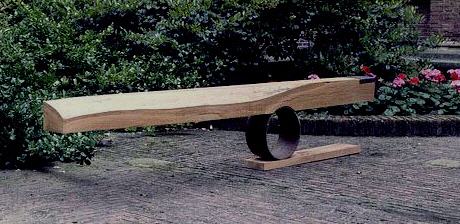
VERNIEUWD
De periode van 1974-1985, de start in Canada, Nederland en de eerste exposities zijn opnieuw in beeld gebracht. Klik hier!
